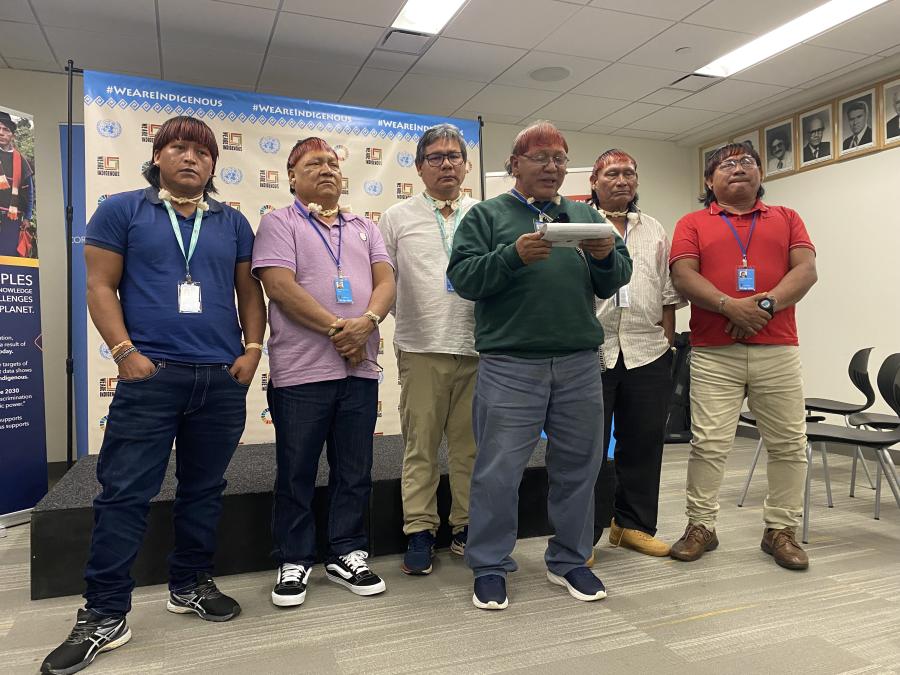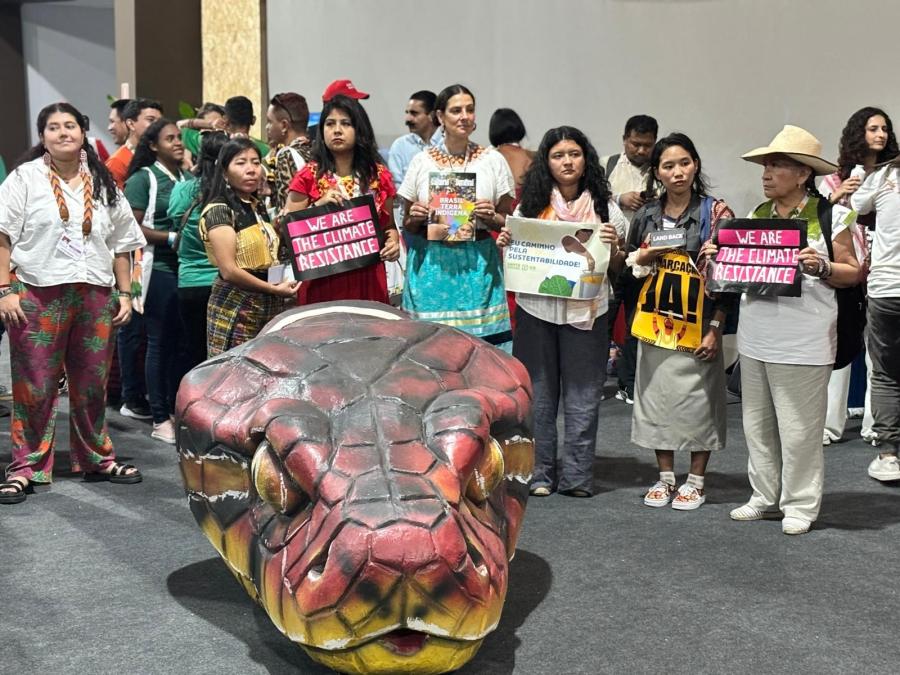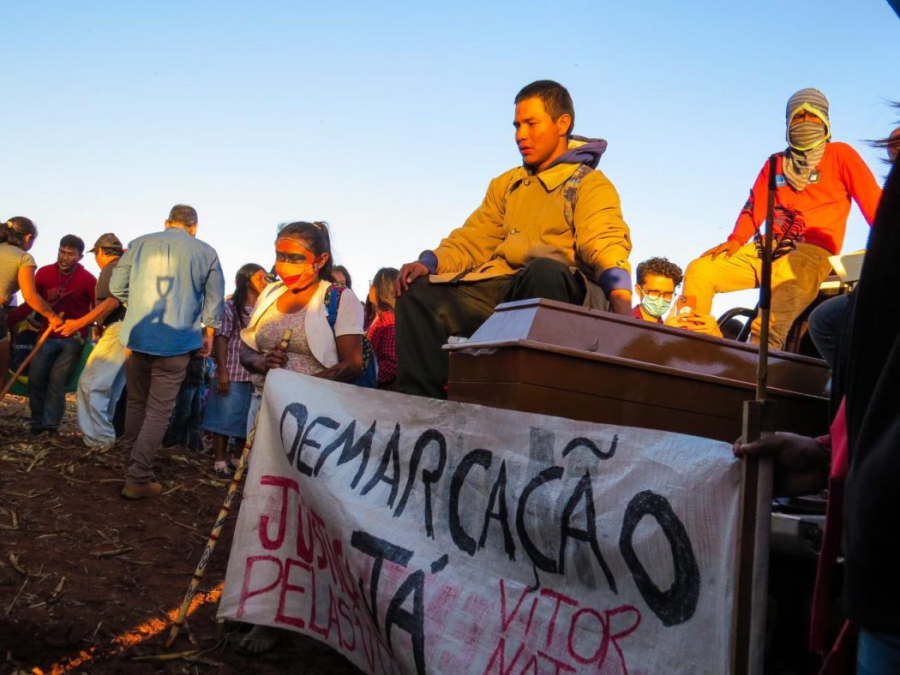The Suyá Indian Project
Today, the Suyá Indians are struggling to maintain their lands, their livelihood, and their culture in the midst of tremendous economic and ecological changes in the northeastern part of the state of Mato Grosso, Brazil. During the past quarter century I have watched, and occasionally assisted with their transformation from an isolated community familiar only with other Indians, to a community whose territory is surrounded by cleared fields for ranches and soybean plantations. They have also become accustomed to dealing with a variety of intermediaries in order to protect their interests. Careful observers of the political landscape, and familiar with political factionalism from their own society, they have, so far, survived and thrived in very difficult times. Through a series of dramatic moves (including a sudden raid in which they expelled many ranch laborers and held others hostage for weeks in order to ensure a judicial review of their claims), they have managed to repossess ancestral lands from which they had been removed in 1959, and have been struggling to turn their defacto possession into a legal one.
Over the years, the Suyá have been greatly assisted by support from a variety of sources, among them the Cultural Survival project which I am currently administering with them. It is important to recognize that this support has had a profoundly beneficial impact and has prepared them for the future in important ways. The Cultural Survival project builds on other projects that have also had a favorable impact on the Suyá, among them Sting's Rainforest Foundation, the Instituto Socioambiental in Brazil, the Rex Foundation of the Grateful Dead, a long-term health care and vaccination project of the Escola Paulista de Medicina in S???o Paulo, and most recently the PRODEAGRO funds provided to the state of Mato Grosso by the World Bank. These have been supplemented by the generally supportive, but severely underfunded administration of the Parque Indigena do Xingu (PIX). Although PIX is part of FUNAI, the Brazilian government's often criticized Indian assistance foundation, it has been administered by Indians from the Xingu for the past 20 years and the Indians themselves have raised funds from a number of outside sources. In the past decade foundations have:
(1) greatly improved the health of the Suyá and trained Suyá health monitors who live in the village and communicate with medical doctors daily through a solar panel powered radio system (Rainforest Foundation and Escola Paulista de Medicina).
(2) Trained Suyá school monitors and established bilingual schools in the Xingu region, including one in the Suyá village (Rainforest Foundation and Instituto Socioambiental).
(3) Brought the attention of the state and federal government to the polluters of their river, and provided armed agents to protect the Suyá from reprisals as they reestablished their claims to their traditional lands. (PRODEAGRO, FUNAI, Ministry of Justice).
(4) Provided funds for video equipment and motorboats so the Suyá can patrol and document invasions of their land, parts of their own culture, and publicize their situation (Rex Foundation/Grateful Dead).
(5) Established a pan-tribal Association of the Indian Lands of the Xingu organization with Indian leadership that has begun to solicit and manage funds for community generated projects (Instituto Socioambiental).
(6) Provided interim support through funds to purchase medicines (when these are otherwise unavailable) and to meet the Suyá's other expenses involving their land claim (Cultural Survival).
The Suyá have encountered the reality of foundation financing -- it ends. Now, they are considering long-term projects they can manage themselves. Yet even the best trained medical technician needs to have medicines to treat serious illnesses, especially epidemics like the whooping cough that afflicted them last winter when medicines ran out. Even the best organized border patrol needs gasoline to power its motors if it is to catch up with motorized trespassers. And sometimes a trip to Brasília to argue a detail of the land claims case cannot wait until money can be allocated by some distant agency for a trip. This flexibility in the face of sudden epidemics, lack of supplies, or urgent travel has been provided through Cultural Survival.
Funds for the Cultural Survival project come from readers like yourselves, especially from those who read about the Suyá in the Smithsonian Magazine article in the May 1996 issue ("The Suyá Sing, Dance, and Fight for a Culture in Peril") and from the sale of the beautiful photographs by Enrico Ferorelli that illustrated the article. The Suyá were active collaborators with the preparation of the article and approved the sale of photographs to fund their activities.
Today, the Suyá want to find a way to raise funds for the community as a whole, not just for individuals the way most money circulates and they also want to use national agencies to obtain this support. With the assistance of contributors to the Cultural Survival project fund, they will be able to make the change from dependency to a relatively independent community.
For the Suyá, the first step in becoming an independent community is through their land claim. The official announcement of the Suyá land claim was published in the Diario Official in Brasilia. Now they must wait until existing residents can file claims for their right to the land, but they have been making plans for this area for years. Until they have taken over the lands and implemented their projects, they will be vulnerable to diseases and sudden attempts to invalidate their claims. The Suyá continue to need assistance while they work through this critical period.
Article copyright Cultural Survival, Inc.



